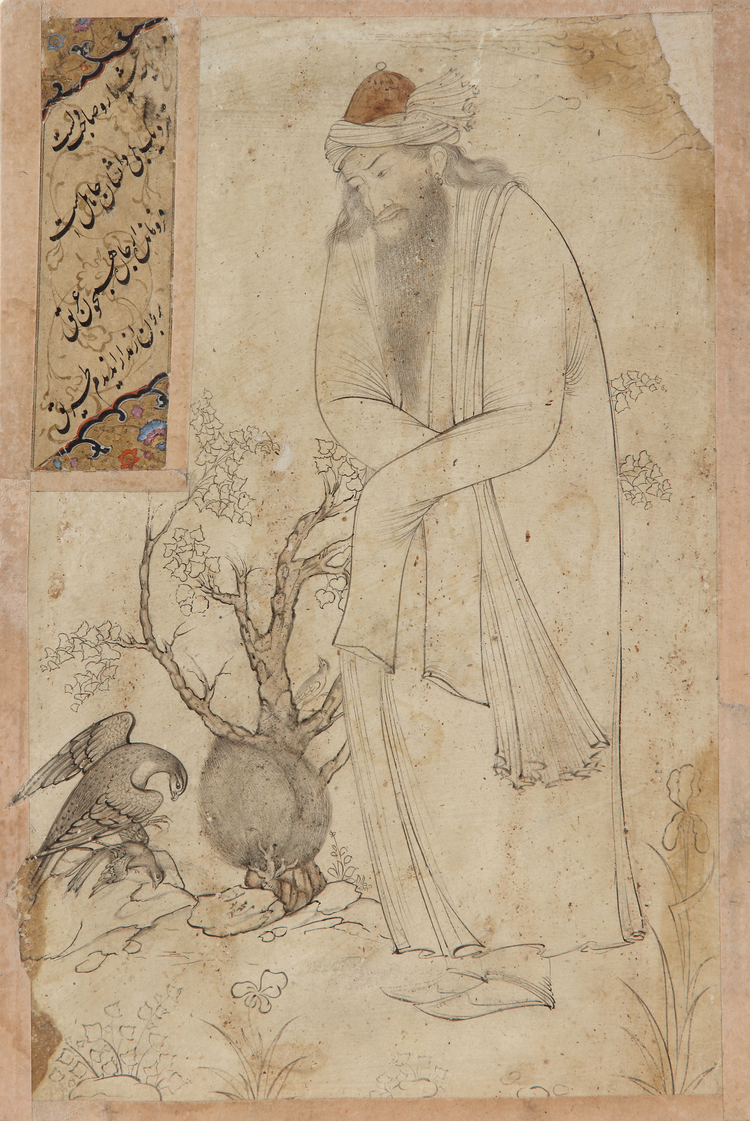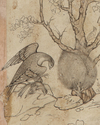A DRAWING OF A DERVISH STYLE OF REZA-I ‘ABBASI, SAVAFID, SIGNED BY MUHAMMED YUSUF, 17TH CENTURY
Pencil and ink on paper, laid down on album page depicting a dervish with two birds in a landscape, with Persian poems in black nasta’liq script on a flower decorated ground singed by Muhammad Yusuf. In the mid-17th century, followers of the famous Riza-yi ‘Abbasi continued his practice of producing drawings of single figures in a landscape for inclusion in albums. This figure can be identified as a sufi, on account of his long-sleeved khirqa cloak and cap. His crossed arms and lowered gaze all suggest that he is in a state of deep introspection. In many examples of Persian paintings, sleeves serve as a metaphor for the emotional state of the wearer, expressing contemplation and reverence. In the case of this figure, his sleeves hang limp, crossed one over the other, emphasizing his contemplation. Sufis frequently spent periods of up to 40 days in isolation in the wilderness. This practice, called Khalwa, facilitated distraction-free meditation and prayer. Young Sufis would engage in this habit under the guidance of a shaikh, and more advanced Sufis would sustain this practice independently throughout their lives. 27.5 by 18.8 cm.
CATALOGUE NOTE Muhammed Yusuf is a Safavid era Persian painter of the Isfahan school. He was an apprentice of Reza Abbasi. The Shahnameh of Rashida is attributed to him. It seems that he and Mohammad Qasem were close co-workers, as their names are usually mentioned together.
PROVENANCE
Private collection, Dr. I. Lak, United Kingdom


